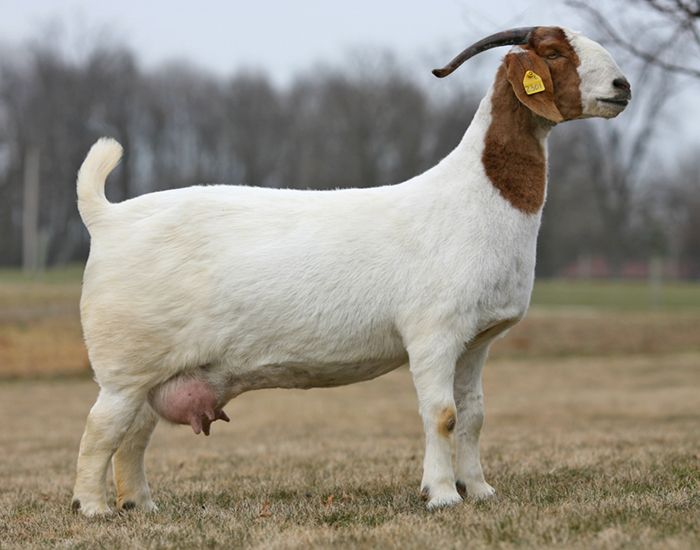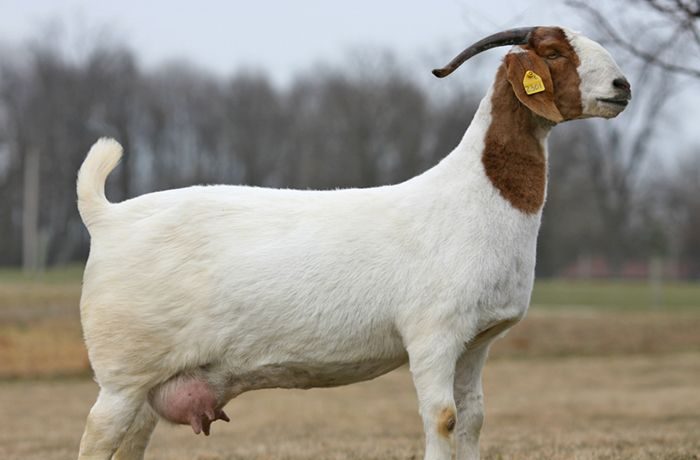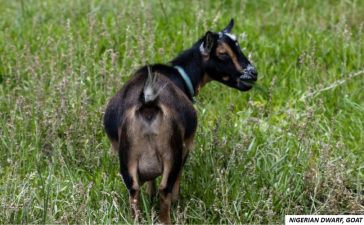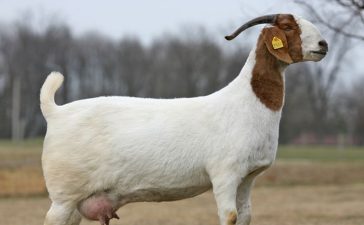Igniting Estrus: A Complete Guide to Bringing Your Doe Into Heat
Understanding Goat Reproductive Cycles and Estrus
Topics covered in this post: - Introduction to goat reproduction (does vs bucks) - The estrous cycle explained: stages, hormones, timeline - Signs of heat in goats: behavioral & physical - Breeding seasons and breed-specific variations - Hormonal regulation and how to track natural cycles - Record keeping for heat cycles and fertility
Introduction:
When it comes to successful goat breeding, timing is everything. Knowing when your doe is ready to mate is not just helpful – it is critical. The key lies in understanding a natural biological process known as the estrous cycle, more commonly referred to as “heat.”
This post will walk you through what the estrus cycle is, how it works, and – most importantly – how to recognize when your doe is ready for action. Whether you are a first-time goat keeper or a seasoned breeder looking to improve conception rates, this guide lays the reproductive groundwork for the entire breeding process.
Oh! did i mentioned that this topic is a five (5) series discussion giving you 5 different approach to the subject matter? Well, hope you enjoy your time here on our blog as we bringing you knowledge-based and practical methods on goat production.
Why Estrus Matters
The female goat (called a doe) will only conceive when bred during estrus, the short window of time when she is fertile and ovulating. Missing this window means a wasted cycle — and potentially months of delay in your breeding plans.
Understanding estrus helps you:
- Maximize breeding efficiency
- Avoid missed heats and failed pregnancies
- Plan for synchronized breeding or artificial insemination (AI)
- Identify and correct reproductive problems
What Is the Estrous Cycle?
The estrous cycle is the recurring set of hormonal and physical changes that prepares a female goat’s body for mating, ovulation, and pregnancy.
Each cycle has four key stages, driven by hormones like estrogen and progesterone:
Proestrus
- Duration: 1 day
- Hormonal Shift: Rising estrogen, decreasing progesterone
- What is Happening: The uterus prepares for potential pregnancy. You may begin to see subtle signs like restlessness or mild swelling around the vulva.
Estrus (Heat)
- Duration: 12 to 48 hours
- Hormonal Shift: Peak estrogen
- What is Happening: The doe is fertile and receptive to a buck. Ovulation typically occurs 12–36 hours after the start of heat. This is your breeding window!
Metestrus
- Duration: 3–5 days
- Hormonal Shift: Estrogen drops; progesterone rises
- What is Happening: The uterus settles post-ovulation. If the doe is pregnant, the embryo begins to implant.
Diestrus
- Duration: 14–16 days
- Hormonal Shift: High progesterone
- What is Happening: The doe’s body acts as if pregnant. If no embryo is detected, prostaglandin triggers regression of the corpus luteum, and the cycle starts again.
The Cycle Timeline
On average, the full estrous cycle of a doe lasts 18–21 days, though it can range between 17 and 24 days depending on the breed and individual variation.
Here is a typical cycle presentation in the table below:
| Stage | Duration | Key Hormone | Reproductive Status |
|---|---|---|---|
| Proestrus | 1 day | Rising estrogen | Prepping for ovulation |
| Estrus | 1–2 days | Peak estrogen | Ovulation & mating window |
| Metestrus | 3–5 days | Progesterone rising | Post-ovulation |
| Diestrus | 14–16 days | High progesterone | Holding pattern, early pregnancy or reset |
When Do Goats Come Into Heat?
-
Seasonality
Goats are seasonally polyestrous, meaning they cycle multiple times per season, but only during specific times of the year. Most breeds go into heat during fall and early winter, as decreasing daylight triggers hormonal activity.
- Breeding season: August to January
- Kidding season (birth): January to June, depending on breed and climate
Some breeds, especially tropical or dairy breeds like Boer, Nubian, and Kiko, may cycle year-round under the right conditions.

2. Breed and Climate Factors
| Breed | Seasonal or Year-Round? | Notes |
|---|---|---|
| Alpine | Seasonal | Strong fall breeders |
| Nubian | Often year-round | Sensitive to management & daylight |
| Boer | Year-round potential | Popular meat breed for flexibility |
| Nigerian Dwarf | Year-round | Excellent for staggered kidding |
| Saanen | Seasonal | Peak fertility in fall |
How to Tell If a Goat Is in Heat
Goats can be subtle or surprisingly vocal — when they are in heat. The more you observe your herd, the better you will be at recognizing the signs.
Most common heat signs are:
| Category | Indicators |
|---|---|
| Behavioral | Flagging (tail wagging), mounting other goats, seeking out bucks, restlessness, loud bleating |
| Physical | Swollen or red vulva, clear discharge, increased urination |
| Milk Production (in lactating does) | Sudden drop or change in flavor |
Pro tips: If you’re using a buck, his behavior can be your biggest clue. Bucks will act agitated, vocal, and interested when a doe is in heat — even before you notice any signs.
The Silent Heat Problem
Sometimes, a doe will go through estrus (heat) with no obvious signs. This is known as “silent heat” and can lead to missed breeding opportunities. This can be due to any of the following possible cause:
- Stress or illness
- Poor nutrition
- First-time cycling (young does)
- Overcrowding or poor housing
- Incorrect buck introduction timing
To address this, keep a heat calendar and watch for subtle physical changes like discharge or behavior shifts.
Tracking and Predicting Heat
Whether you are planning to use natural mating or artificial insemination, accurate tracking is vital.
Recommended Methods:
- Heat Calendar: Track each doe’s last known heat. Expect her to return to heat ~18–21 days later.
- Chalk Tail Markers or Harnesses: Use buck harnesses to track mounting behavior.
- Vaginal Mucus Scoring: Check for stringy, clear mucus (indicating peak estrogen).
- Behavioral Logs: Document signs daily for comparison.
Hormonal Markers (Advanced)
For those interested in precision breeding, hormone tracking offers accuracy but requires veterinary tools:
- Progesterone tests: Can confirm pregnancy post-breeding.
- Estrogen levels: Indicates peak heat.
- Ultrasound: Can help confirm ovulation or early pregnancy.
These are useful if you’re using artificial insemination, embryo transfer, or managing high-value breeding stock.
Common Myths About Heat in Goats
| Myth | Reality |
|---|---|
| “If she’s not flagging, she’s not in heat.” | Silent heat is real – physical signs can be subtle. |
| “Bucks can induce heat anytime.” | Only if the doe is hormonally receptive; bucks trigger but don’t override biology. |
| “All breeds cycle year-round.” | Most breeds are seasonal unless genetically adapted otherwise. |
Practical Tips for Beginners
- Watch your goats at sunrise or dusk. Goats tend to show heat signs in cooler parts of the day.
- Use a teaser buck. Even a castrated or vasectomized buck can trigger behavior.
- Keep records. Heat cycles vary — documentation improves your success rate over time.
- Don’t assume. Just because a doe is mounting others doesn’t mean she is in heat — often, it’s the reverse.
In Conclusion:
Bringing a doe into heat – or recognizing when she is already there – is the foundation of effective goat breeding. By understanding the estrous cycle, seasonal patterns, and behavioral cues, you position yourself for greater success whether your goal is meat, milk, or kids.
In Part 2, we will explore natural strategies for encouraging estrus in goats without the use of hormones – including nutrition, light exposure, and “the buck effect.”
Stay tuned, and bookmark this page if you are a first time visitor on our blog – breeding season is just heating up!



